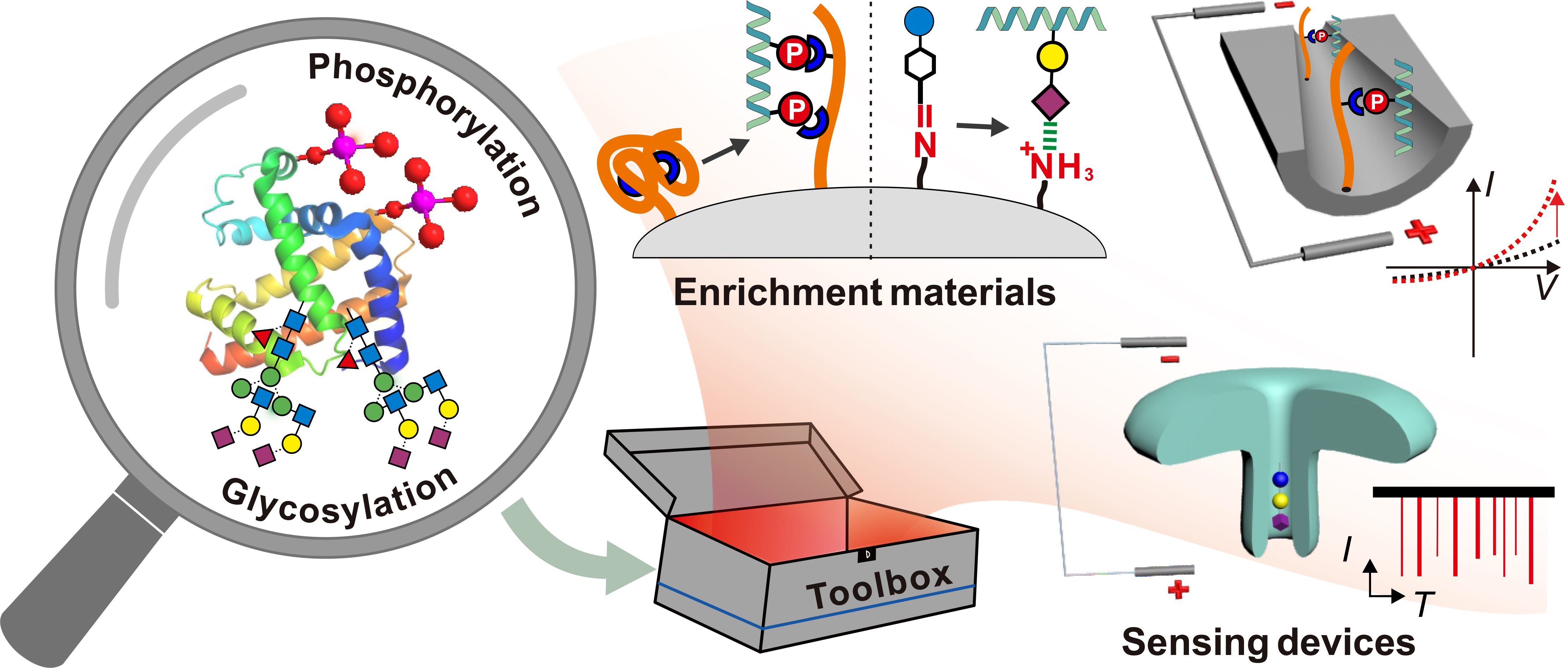Minmin Li, Yuting Xiong, and Guangyan Qing*
Acc. Chem. Res. 2023, DOI: 10.1021/acs.accounts.3c00397
https://doi.org/10.1021/acs.accounts.3c00397
Recently, Qing's research team from the Bioseparation and Interface Molecular Mechanism Research Group (Group 1824) of the Biotechnology Research Department of our institute was invited to publish a review article on new chemical tools for protein phosphorylation and glycosylation analysis, systematically summarizing the research The team's exploration and efforts in polyphosphorylation enrichment, phosphorylation dynamic monitoring, glycosylation dynamic enrichment and structural characterization.

As two of the most widespread protein post-translational modifications, phosphorylation and glycosylation regulate numerous cellular processes, and their abnormalization is closely related to various human diseases. Phosphorylation and glycosylation studies help reveal disease mechanisms, discover markers and therapeutic targets, and are becoming one of the new breakthroughs in the development of precision medicine in the post-genome era. However, the extremely low abundance of protein phosphorylation and glycosylation and the enormous structural complexity of glycosylation make its analytical characterization still face considerable challenges.
Qing's team has long been committed to the development of separation materials and analytical devices for protein post-translational modification, and in 2016, for the first time anticipated the application potential of biomolecule-responsive polymers as platform materials in the field of protein post-translational modification omics ( Adv. Mater., 2017). Subsequently, the team used responsive polymers combined with affinity ligands to achieve multi-parameter dynamically adjustable capture and release of polyphosphorylated peptides (Nat. Commun., 2017); further, the ligand-containing responsive polymer Introduced into biomimetic ion channel devices, the selective and dynamic process monitoring of tyrosine phosphorylation is realized (J. Am. Chem. Soc., 2020); combined with the concept of dynamic covalent chemistry, sialoglycosyl Efficient dynamic capture of peptides (J. Am. Chem. Soc., 2020). The introduction of nanopore single-molecule detection technology realized the nanopore detection and identification of complex oligosaccharide chains for the first time, and provided a solution for advancing nanopore-based single-molecule glycosylation profiling and even sugar chain sequencing (Nat. Commun., 2023). Finally, the review also provides an outlook on the limitations and future development directions of various materials and devices.
The review titled "Innovative Chemical Tools to Address Analytical Challenges of Protein Phosphorylation and Glycosylation" was recently published in Accounts of Chemical Research. The co-first authors of this work are Dr. Minmin Li and postdoctoral fellow Yuting Xiong from the 1824 group of our institute. The above work was funded by the National Natural Science Foundation of China, the Innovation Fund of our institute and other projects.